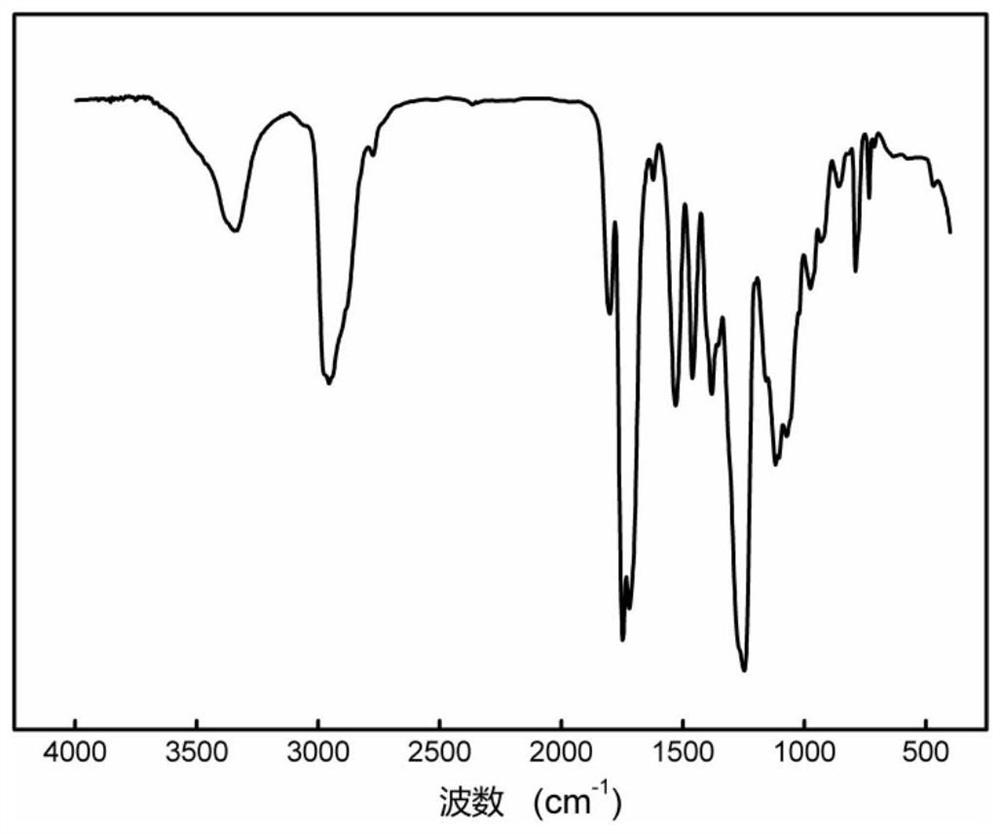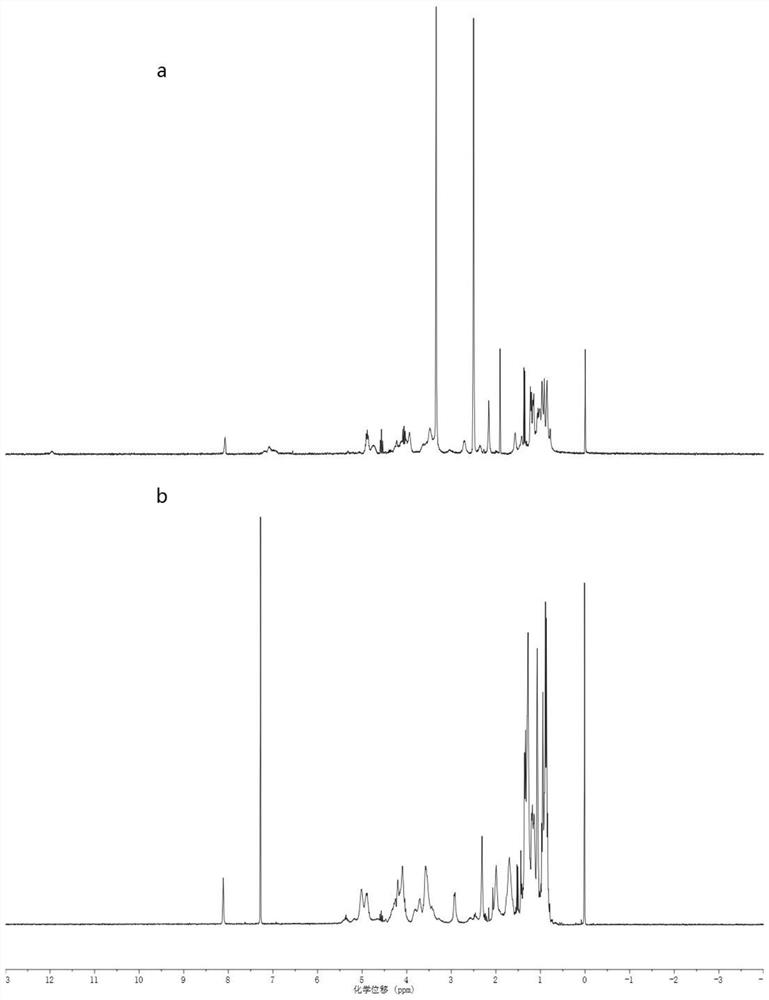A kind of cationic waterborne polyurethane resin and preparation method thereof
A water-based polyurethane and cationic technology, applied in the field of polyurethane, can solve the problems of loss of mechanical properties, poor shape stability, poor oxidation resistance and hydrolysis resistance, etc., and achieve the effect of reducing heavy dependence and excellent hydrolysis resistance
- Summary
- Abstract
- Description
- Claims
- Application Information
AI Technical Summary
Problems solved by technology
Method used
Image
Examples
preparation example Construction
[0041] The invention provides a kind of preparation method of cationic waterborne polyurethane resin, comprising:
[0042] A) mixing poly(carbonate-ether) glycol, diisocyanate with small molecule chain extender, catalyst and solvent, and reacting to obtain the first intermediate;
[0043] B) mixing the first intermediate with a hydrophilic chain extender, a catalyst and a solvent, and reacting to obtain a second intermediate;
[0044] C) neutralizing the second intermediate and the neutralizing agent to obtain a cationic waterborne polyurethane resin.
[0045]The preparation method of a cationic water-based polyurethane resin provided by the present invention firstly mixes poly(carbonate-ether) glycol, diisocyanate, small molecule chain extender, catalyst and solvent, and reacts to obtain the first intermediate.
[0046] The present invention has no limitation on the source of the poly(carbonate-ether) glycol used, and it is preferably prepared according to the method disclos...
Embodiment 1
[0064] According to the method disclosed in the patent 201210086834.X, a poly(carbonate-ether) glycol with a number average molecular weight of 2100 g / mol and a carbonate unit content of 50% was prepared.
[0065] Add 100 grams of poly(carbonate-ether) glycol prepared by the above method to a three-necked flask, heat to 100°C, dehydrate at -0.98MPa for 1 hour, cool to 80°C, and add 44 grams of iso Phorone diisocyanate, 12.7 grams of butanediol and 100 grams of methyl ethyl ketone were reacted for 4 hours, and then 1.6 grams of 3-dimethylamino-1,2-propanediol, 0.09 grams of dibutyltin dilaurate catalyst and 20 grams of butanone, reacted for 2 hours, cooled to 30 ° C, added 0.8 grams of acetic acid, reacted for 2 hours, then added 200 grams of deionized water, stirred at 1800 rpm for 2 hours, and distilled off butanone under reduced pressure to obtain a cation Waterborne polyurethane resin. The performance data of the cationic waterborne polyurethane resin prepared in Example 1...
Embodiment 2
[0067] According to the method disclosed in the patent 201210086834.X, a poly(carbonate-ether) glycol with a number average molecular weight of 2100 g / mol and a carbonate unit content of 50% was prepared.
[0068] Add 100 grams of poly(carbonate-ether) glycol prepared by the above method to a three-necked flask, heat to 100°C, dehydrate at -0.98MPa for 1 hour, cool to 80°C, and add 44 grams of iso Phorone diisocyanate, 11.5 grams of butanediol and 100 grams of methyl ethyl ketone were reacted for 4 hours, and then 3.2 grams of 3-dimethylamino-1,2-propanediol, 0.09 grams of dibutyltin dilaurate catalyst and 20 grams of butanone, reacted for 2.5 hours, cooled to 30 ° C, added 1.6 grams of acetic acid, reacted for 1.5 hours, then added 200 grams of deionized water, stirred at 1600 rpm for 2 hours, and distilled off butanone under reduced pressure to obtain a cation Waterborne polyurethane resin. The performance data of the cationic waterborne polyurethane resin prepared in Examp...
PUM
 Login to View More
Login to View More Abstract
Description
Claims
Application Information
 Login to View More
Login to View More - R&D
- Intellectual Property
- Life Sciences
- Materials
- Tech Scout
- Unparalleled Data Quality
- Higher Quality Content
- 60% Fewer Hallucinations
Browse by: Latest US Patents, China's latest patents, Technical Efficacy Thesaurus, Application Domain, Technology Topic, Popular Technical Reports.
© 2025 PatSnap. All rights reserved.Legal|Privacy policy|Modern Slavery Act Transparency Statement|Sitemap|About US| Contact US: help@patsnap.com



